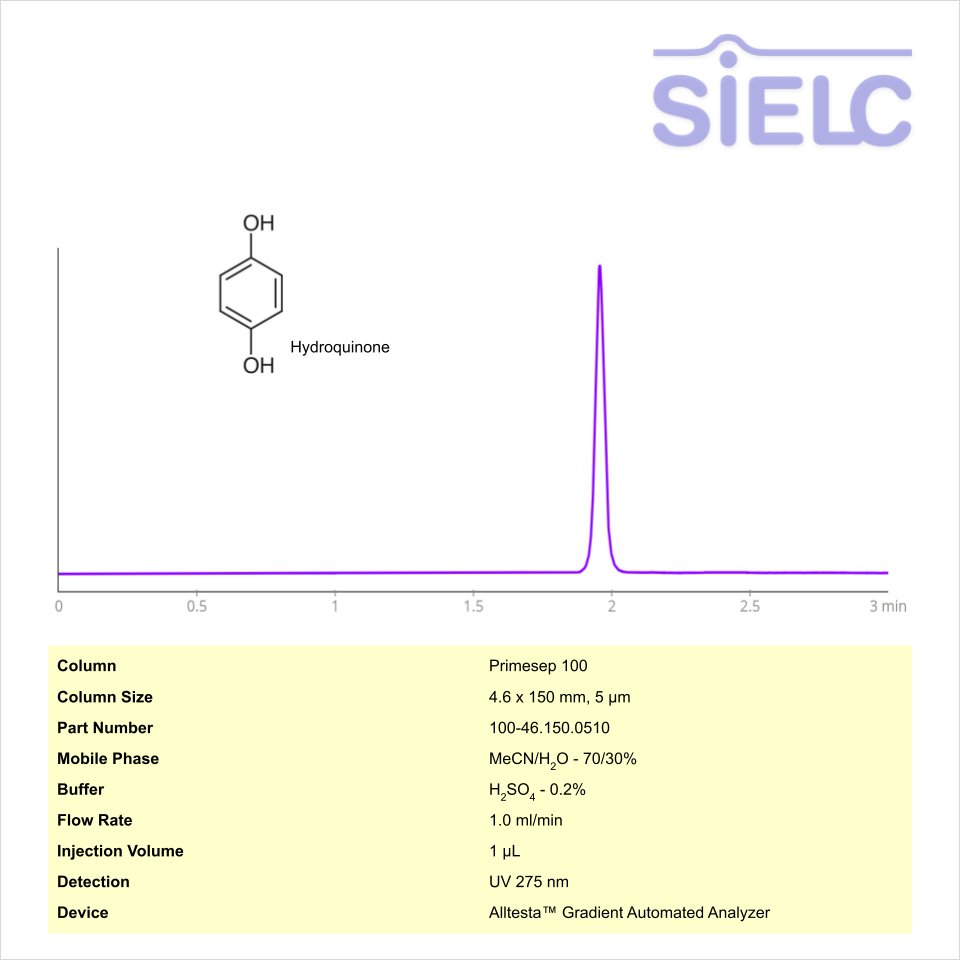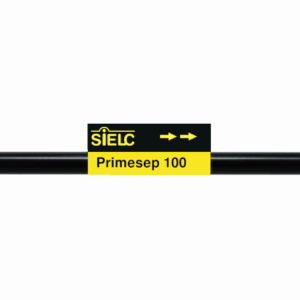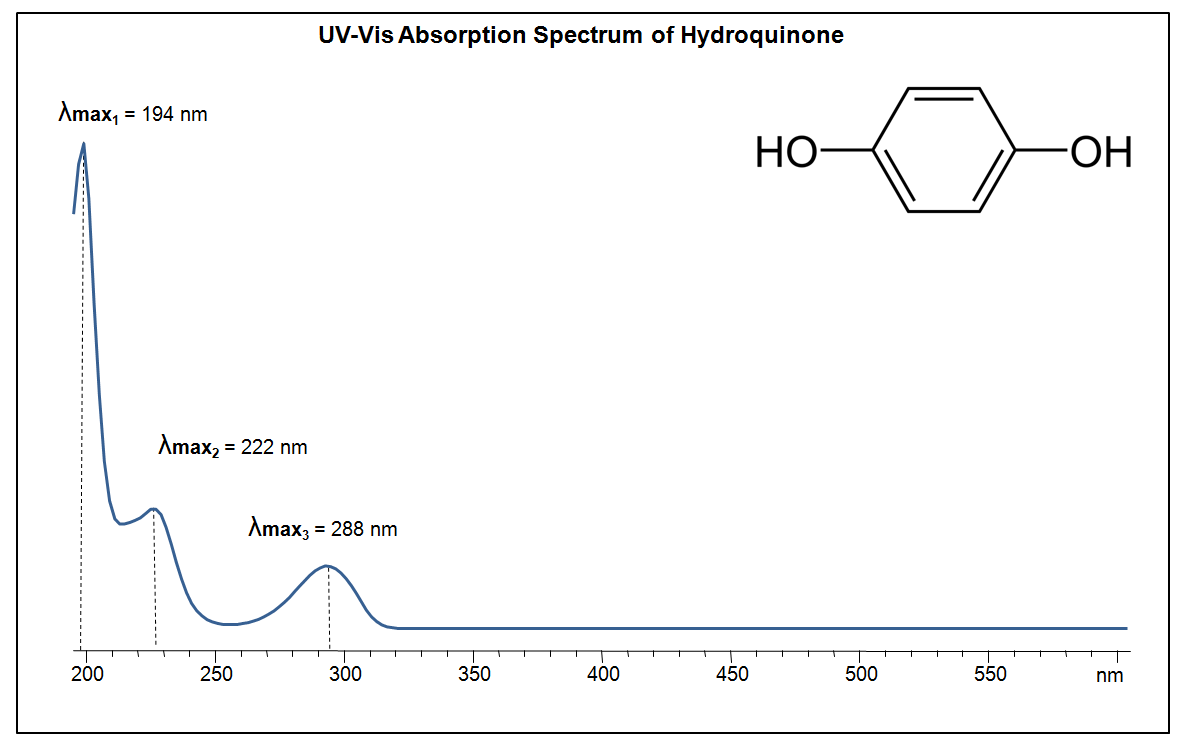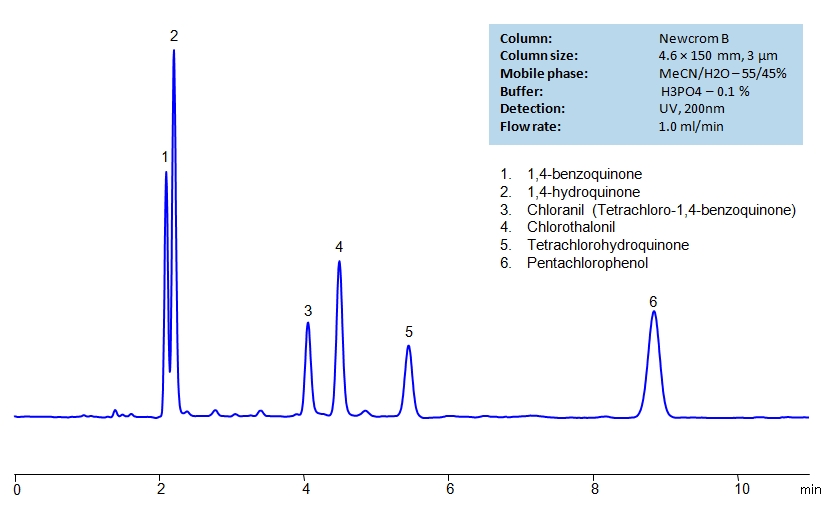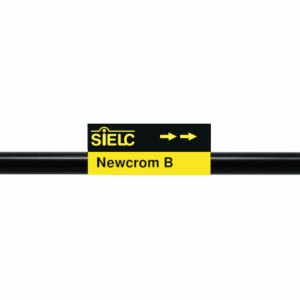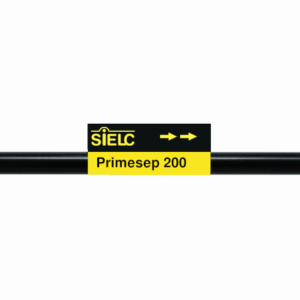| CAS Number | 123-31-9 |
|---|---|
| Molecular Formula | C6H6O2 |
| Molecular Weight | 110.112 |
| InChI Key | QIGBRXMKCJKVMJ-UHFFFAOYSA-N |
| LogP | 0.6 |
| Synonyms |
|
Applications:
HPLC Method for Analysis of Hydroquinone on Primesep 100 Column on Alltesta™
November 11, 2025
HPLC Method for Hydroquinone on Primesep 100 by SIELC Technologies
High Performance Liquid Chromatography (HPLC) Method for Analysis of Hydroquinone
Hydroquinone is an aromatic derivative of benzene with the chemical formula C6H6O2. It is often used in skin whitening, although it has been banned by the United States Food and Drug Administration for over-the-counter use due to being a potential carcinogen. It can cause a variety of disease including but not limited to ochronosis. thyroid follicular cell hyperplasias, mononuclear cell leukemia, and adenomas. Agencies across the world encourage research into other agents to treat hyperpigmentation. You can find detailed UV spectra of Hydroquinone and information about its various lambda maxima by visiting the following link.
Hydroquinone can be retained and analyzed using the Primesep 100 stationary phase column. The analysis utilizes an isocratic method with a simple mobile phase consisting of water and acetonitrile (MeCN) with phosphoric acid as a buffer. Detection is performed using UV.
| Column | Primesep 100, 4.6 x 150 mm, 5 µm, 100 A, dual ended |
| Mobile Phase | MeCN – 70% |
| Buffer | Sulfuric Acid |
| Flow Rate | 1.0 mL/min |
| Detection | UV 275 nm |
| Class of Compounds | Phenols |
| Analyzing Compounds | Hydroquinone |
Application Column
Primesep 100
Column Diameter: 4.6 mm
Column Length: 150 mm
Particle Size: 5 µm
Pore Size: 100 A
Column options: dual ended

HPLC Method for Analysis of Hydroquinone and 4-Methoxyphenol (Mequinol) on Primesep 100 Column
August 15, 2024
High Performance Liquid Chromatography (HPLC) Method for Analysis of Hydroquinone, 4-Methoxyphenol on Primesep 100 by SIELC Technologies
Separation type: Liquid Chromatography Mixed-mode SIELC Technologies
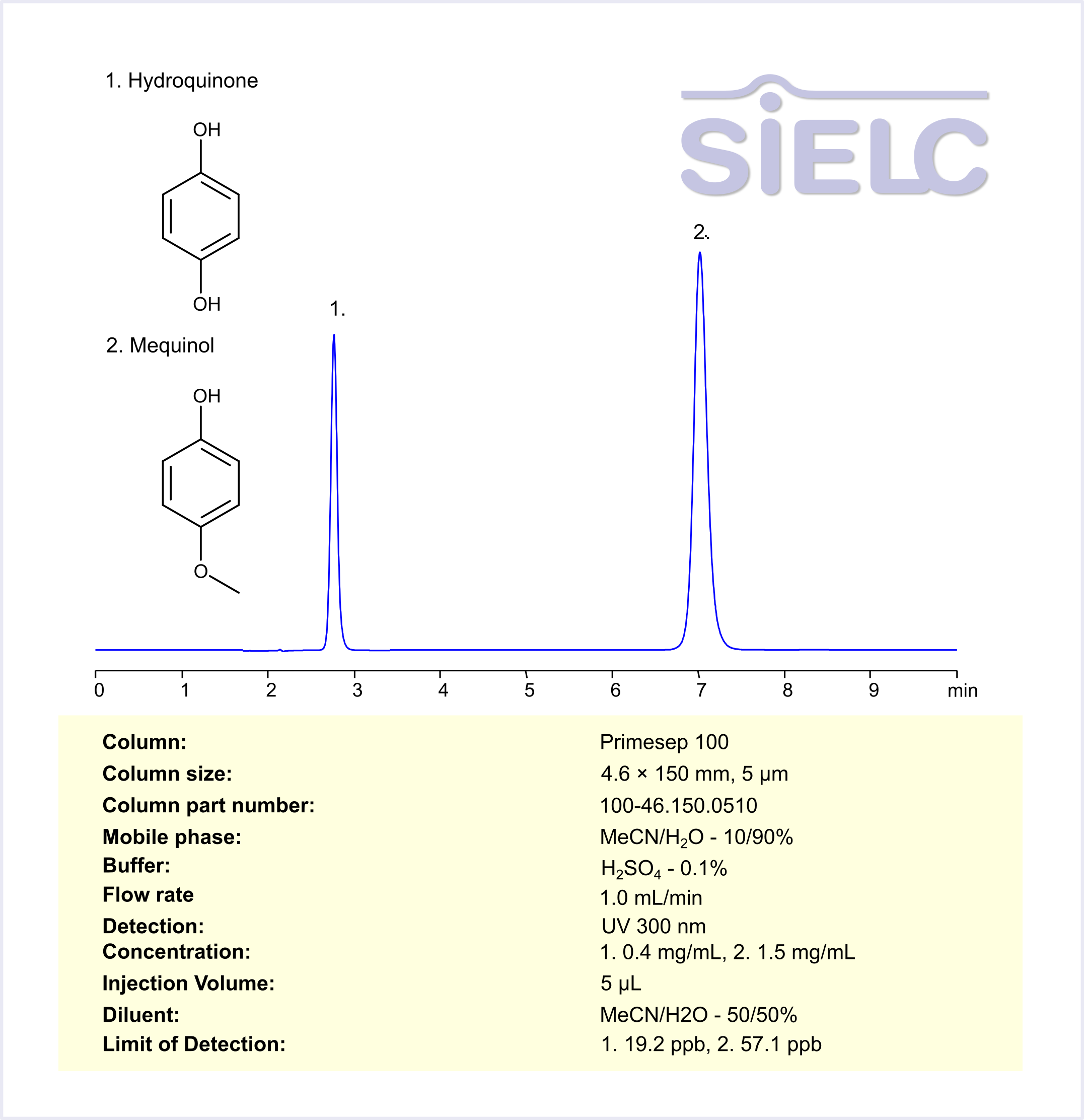
High Performance Liquid Chromatography (HPLC) Method for Analysis of Hydroquinone, 4-Methoxyphenol
Hydroquinone (C₆H₄(OH)₂) is a dihydroxybenzene, a type of phenol, with two hydroxyl groups attached to a benzene ring. It functions as a reducing agent and is used in cosmetics to lighten skin by inhibiting melanin synthesis. It is also used in photographic development and as an antioxidant in various industrial processes.
Mequinol (4-methoxyphenol, C₇H₈O₂) is an aromatic compound and a hydroquinone derivative, where one of the hydroxyl groups of hydroquinone is replaced by a methoxy group (-OCH₃). This structure imparts similar properties to hydroquinone, allowing mequinol to function as a melanin synthesis inhibitor. It works by disrupting the enzyme tyrosinase, which is crucial in the melanin production pathway.
Hydroquinone, 4-Methoxyphenol can be retained, separated and analyzed using a Primesep 100 mixed-mode stationary phase column. The analysis employs an isocratic method with a simple mobile phase comprising water, acetonitrile (MeCN), and sulfuric acid as a buffer. This method allows for detection using UV 300 nm.
You can find detailed UV spectra of Hydroquinone, 4-Methoxyphenol and information about its various lambda maxima by visiting the following links: UV-Vis Spectrum of Hydroquinone, UV-Vis Spectrum of 4-methoxyphenol.
| Column | Primesep 100, 4.6 x 150 mm, 5 µm, 100 A, dual ended |
| Mobile Phase | MeCN – 10% |
| Buffer | H2SO4 -0.1% |
| Flow Rate | 1.0 ml/min |
| Detection | UV 300 nm |
| Limit of Detection | 1. 19.2 ppb, 2. 57.1 ppb |
| Class of Compounds | Phenols |
| Analyzing Compounds | Hydroquinone, 4-Methoxyphenol |
Application Column
Primesep 100
Column Diameter: 4.6 mm
Column Length: 150 mm
Particle Size: 5 µm
Pore Size: 100 A
Column options: dual ended
Hydroquinone

HPLC Method for Analysis of Hydroquinone on Primesep 100 Column
August 2, 2024
High Performance Liquid Chromatography (HPLC) Method for Analysis of Hydroquinone on Primesep 100 by SIELC Technologies
Separation type: Liquid Chromatography Mixed-mode SIELC Technologies
High Performance Liquid Chromatography (HPLC) Method for Analysis of Hydroquinone
Hydroquinone can be retained, separated and analyzed using a Primesep 100 mixed-mode stationary phase column. The analysis employs an isocratic method with a simple mobile phase comprising water, acetonitrile (MeCN), and sulfuric acid as a buffer. This method allows for detection using UV 200 nm.
You can find detailed UV spectra of Hydroquinone and information about its various lambda maxima by visiting the following link.
| Column | Primesep 100, 4.6 x 150 mm, 5 µm, 100 A, dual ended |
| Mobile Phase | MeCN – 1% |
| Buffer | H2SO4 -0.05% |
| Flow Rate | 1.0 ml/min |
| Detection | UV 300 nm |
| Samples | 1.0 mg/ml in MeCN/H2O – 50/50% |
| Injection volume | 1 µl |
| LOD* | 20 ppb (300 nm) |
| Class of Compounds | Synthetic corticosteroid |
| Analyzing Compounds | Hydroquinone |
Application Column
Primesep 100
Column Diameter: 4.6 mm
Column Length: 150 mm
Particle Size: 5 µm
Pore Size: 100 A
Column options: dual ended

UV-Vis Spectrum of Hydroquinone
July 1, 2024
Access the UV-Vis Spectrum SIELC Library
If you are looking for optimized HPLC method to analyze Hydroquinone check our HPLC Applications library
For optimal results in HPLC analysis, it is recommended to measure absorbance at a wavelength that matches the absorption maximum of the compound(s) being analyzed. The UV spectrum shown can assist in selecting an appropriate wavelength for your analysis. Please note that certain mobile phases and buffers may block wavelengths below 230 nm, rendering absorbance measurement at these wavelengths ineffective. If detection below 230 nm is required, it is recommended to use acetonitrile and water as low UV-transparent mobile phases, with phosphoric acid and its salts, sulfuric acid, and TFA as buffers.

HPLC Separation of Haloaromatics and Quinones on Newcrom B Column
February 6, 2020
HPLC Method for Benzoquinone, Hydroquinone, Chlorothalonil, Chloranil, Pentachlorophenol, Tetrachlorohydroquinone on Newcrom B by SIELC Technologies
High Performance Liquid Chromatography (HPLC) Method for Analysis of Benzoquinone, Hydroquinone, Chlorothalonil, Chloranil, Pentachlorophenol, Tetrachlorohydroquinone.
1,4-benzoquinone, also known as para-quinone, is a compound with the formula C6H4O2. It is typically used as a precursor to hydroquinone, which is a reducing agent and antioxidant. It also serves as a dehydrogenation reagent and dienophile in Diels-Alder reactions.
1,4-hydroquinone is an aromatic derivative of benzene with the chemical formula C6H6O2. It is often used in skin whitening, although it has been banned by the United States Food and Drug Administration for over-the-counter use due to being a potential carcinogen. It can cause a variety of disease including but not limited to ochronosis. thyroid follicular cell hyperplasias, mononuclear cell leukemia, and adenomas. Agencies across the world encourage research into other agents to treat hyperpigmentation. You can find detailed UV spectra of hydroquinone and information about its various lambda maxima by visiting the following link.
Chloranil, also known as tetrachloro-1,4-benzoquinone, is a quinone with the chemical formula C6Cl4O2. It is a planar molecule that functions as an oxidant. It serves as a hydrogen acceptor and is more electrophilic than quinone. Chloranil is used to test for free secondary amines, which is useful to check for the presence of proline derivatives. Commercially, it is a precursor to dyes.
Chlorothalonil is a compound with a variety of uses as a fungicide, wood protectant, pesticide, and acaricide. It is used predominantly on peanuts, potatoes, and tomatoes. Outside of agriculture, it is also used in paints, resins, emulsions, and coatings. It’s chemical formula is C8Cl4N2.
Tetrachlorohydroquinone, also known as TCHQ, is a chlorinated organic compound with the chemical formula C6H2Cl4O2. It is a metabolote of the biocide pentachlorophenol. It causes damage to cells by increasing reactive oxygen species (ROS). It is harmful if swallowed and can cause serious eye damage.
Pentachlorophenol is a manufactured chemical with the chemical formula C6HCl5O. It is most often used as herbicide, insecticide, fungicide, algaecide, and disinfectant. Exposure to it can cause damage to liver, kidney, blood, lungs, eyes, skin, and mouth. It is classified as a probable human carcinogen.
Benzoquinone, Hydroquinone, Chlorothalonil, Chloranil, Pentachlorophenol, Tetrachlorohydroquinone can be retained and analyzed using the Newcrom B stationary phase column. The analysis utilizes an isocratic method with a simple mobile phase consisting of water and acetonitrile (MeCN) with a phosphoric acid buffer. Detection is performed using UV.
| Column | Newcrom B, 4.6 x 150 mm, 3 µm, 100 A, dual ended |
| Mobile Phase | MeCN/H2O – 55/45% |
| Buffer | H3PO4 – 0.1% |
| Flow Rate | 1.0 ml/min |
| Detection | UV 200 nm |
| Class of Compounds | Haloaromatics, Quinones, Hydrophobic |
| Analyzing Compounds | Benzoquinone, Hydroquinone, Chlorothalonil, Chloranil, Pentachlorophenol, Tetrachlorohydroquinone |
Application Column
Newcrom B
Column Diameter: 4.6 mm
Column Length: 150 mm
Particle Size: 3 µm
Pore Size: 100 A
Column options: dual ended
Chloranil
Chlorothalonil
Hydroquinone
Pentachlorophenol
Tetrachlorohydroquinone

HPLC Separation of 8 Generic Compounds on Primesep 200
March 27, 2011
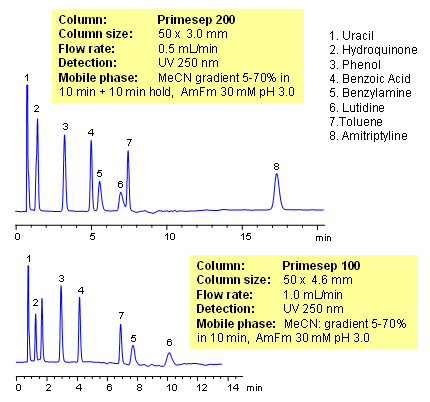
Mixed-mode HPLC columns allow to analyze compounds with drastically different properties in one run. Acidic, basic, and neutral compounds can be separated in one run using either isocratic or gradient conditions. In this application, neutral hydrophilic (uracil, phenol and hydroquinone), neutral hydrophobic (toluene), hydrophilic acidic (benzoic acid), hydrophilic basic (lutidine) and hydrophobic basic (amitriptyline) are separated using gradient of ACN. Neutral compounds are retained by reversed-phase mechanism, hydrophilic acidic compound become more hydrophobic at lower pH and retain by reversed-phase mechanism too. Basic compounds are retained by cation exchange mechanism, and hydrophobic basic compounds are retained by reversed-phase and cation-exchange mechanisms. All compounds are resolved within 17 minutes on a short column. Method can be applied to various polar and hydrophobic compounds, which can be separated on one column and in one run. Mixed-mode columns can operate in single or combination of several modes: reversed-phase, ion-exchange, ion-exclusion and HILIC. This mixed-mode HPLC column can be used as a general column for separation of wide range of compounds.
| Column | Primesep 200, Primesep 100 5 µm, 100A |
| Mobile Phase | MeCN/H2O |
| Buffer | AmFm pH3.0 |
| Flow Rate | 0.5 ml/min, 1.0 ml/min |
| Detection | UV, 250 nm |
| Class of Compounds |
Drug, Acid, Hydrophilic, Ionizable, Hormone |
| Analyzing Compounds | Uracil, Hydroquinone, Phenol, Benzoic Acid, Benzylamine, Lutidine, Toluene, Amitriptyline |
Application Column
Primesep 200
Column Diameter: 3.2 mm
Column Length: 50 mm
Particle Size: 5 µm
Pore Size: 100 A
Column options: dual ended
Benzoic Acid
Benzylamine
Hydroquinone
Lutidine
Phenol
Toluene
Uracil

HPLC Separation of 8 Generic Compounds on Primesep 100
March 27, 2011

Mixed-mode HPLC columns allow to analyze compounds with drastically different properties in one run. Acidic, basic, and neutral compounds can be separated in one run using either isocratic or gradient conditions. In this application, neutral hydrophilic (uracil, phenol and hydroquinone), neutral hydrophobic (toluene), hydrophilic acidic (benzoic acid), hydrophilic basic (lutidine) and hydrophobic basic (amitriptyline) are separated using gradient of ACN. Neutral compounds are retained by reversed-phase mechanism, hydrophilic acidic compound become more hydrophobic at lower pH and retain by reversed-phase mechanism too. Basic compounds are retained by cation exchange mechanism, and hydrophobic basic compounds are retained by reversed-phase and cation-exchange mechanisms. All compounds are resolved within 17 minutes on a short column. Method can be applied to various polar and hydrophobic compounds, which can be separated on one column and in one run. Mixed-mode columns can operate in single or combination of several modes: reversed-phase, ion-exchange, ion-exclusion and HILIC. This mixed-mode HPLC column can be used as a general column for separation of wide range of compounds.
| Column | Primesep 200, Primesep 100 5 µm, 100A |
| Mobile Phase | MeCN/H2O |
| Buffer | AmFm pH3.0 |
| Flow Rate | 0.5 ml/min, 1.0 ml/min |
| Detection | UV, 250 nm |
| Class of Compounds |
Drug, Acid, Hydrophilic, Ionizable, Hormone |
| Analyzing Compounds | Uracil, Hydroquinone, Phenol, Benzoic Acid, Benzylamine, Lutidine, Toluene, Amitriptyline |
Application Column
Primesep 100
Column Diameter: 4.6 mm
Column Length: 50 mm
Particle Size: 5 µm
Pore Size: 100 A
Column options: dual ended
Benzoic Acid
Benzylamine
Hydroquinone
Lutidine
Phenol
Toluene
Uracil

HPLC Separation of Acidic, Basic, and Neutral Compounds on Primesep 200
November 21, 2010

Primesep 100 and Primesep 200 columns can be used as a universal column for analysis of wide range of compounds. These mixed-mode reversed-phase ion-exchange HPLC columns can provide a valuable alternative to traditional reversed-phase column. Amines, amino acids, quaternary amines, and various zwitter-ions can be analyzed along with hydrophobic compounds and organic and inorganic counter-ions. In this application, 8 compounds with different hydrophobic, hydrophilic, basic and acidic properties are separated based on their properties. Primesep 100 column is a mixed-mode HPLC column with a C12 carbon chain and carboxylic acid on the surface with pKa of 1. Primesep 200 column is a mixed-mode HPLC column with a C12 carbon chain and carboxylic acid on the surface with pKa of 2. These columns can be used with 100% organic (ACN) and 100% aqueous mobile phases. This HPLC method can be adopted as a generic and robust approach for analysis of acidic, basic and neutral compounds within the same run.
| Column | Primesep 200, 3.0×50 mm, 5 µm, 100A |
| Mobile Phase | MeCN/H2O |
| Buffer | AmFm pH3.0 |
| Flow Rate | 0.5 ml/min |
| Detection | UV, 250 nm |
| Class of Compounds |
Drug, Acid, Hydrophilic, Ionizable, Hormone |
| Analyzing Compounds | Uracil, Hydroquinone, Phenol, Benzoic Acid, Benzylamine, Lutidine, Toluene, Amitriptyline |
Application Column
Primesep 200
Column Diameter: 3.2 mm
Column Length: 50 mm
Particle Size: 5 µm
Pore Size: 100 A
Column options: dual ended
Benzoic Acid
Benzylamine
Hydroquinone
Lutidine
Phenol
Toluene
Uracil


